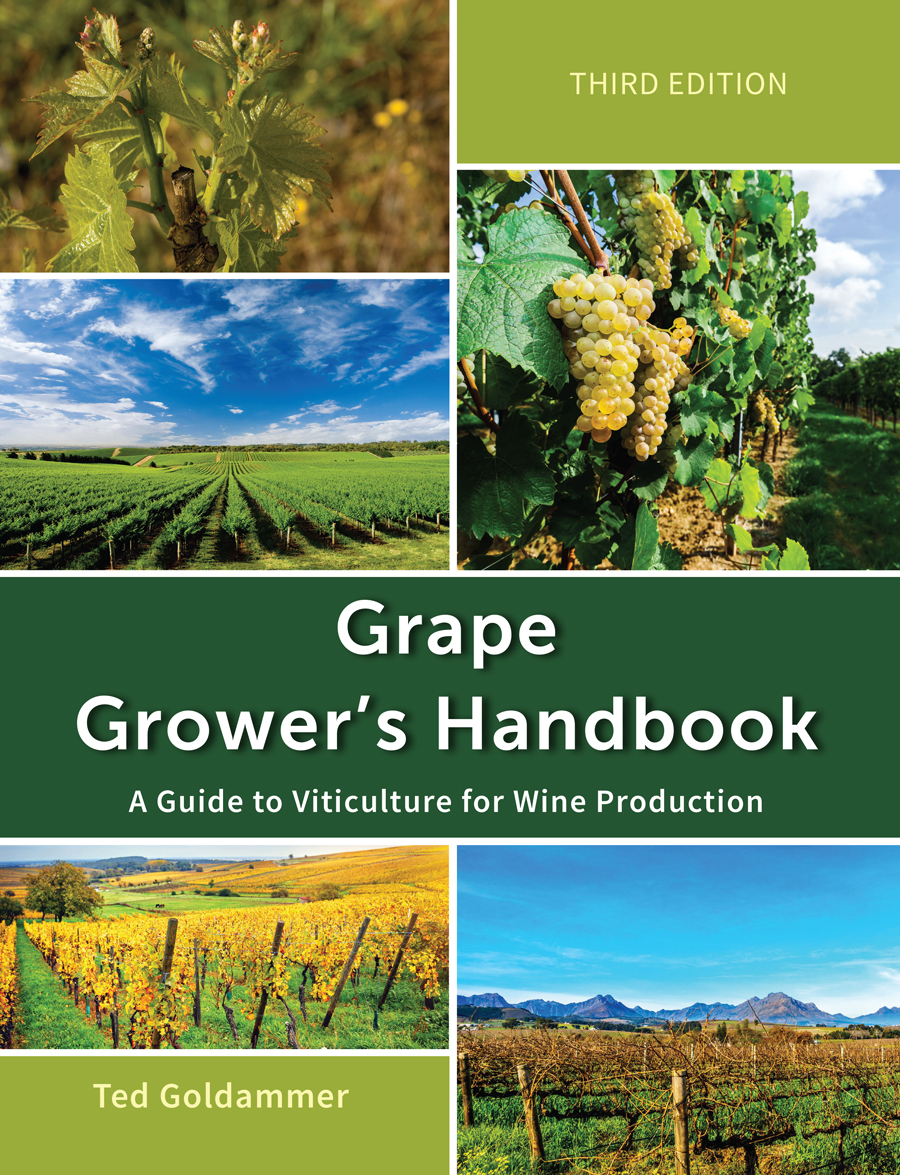Managing Vineyard Diseases
Fungal Pathogens
Downy Mildew
Downy mildew, a disease native to North America, is caused by the fungus Plasmopara viticola. Downy mildew can infect young leaves as well as flowers and fruit clusters. Downy mildew is primarily a disease of warm, humid, growing regions such as much of Europe and eastern United States.
Symptoms
Vegetative: Infections are most common on the foliage, especially young leaves while they are expanding. Leaves usually appear to be the first infected with light green or yellow spots on the upper surface. Lesions on older leaves in late summer have a characteristic “oil spot” appearance and a somewhat “mosaic-like” appearance of small angular yellow-brown spots confined by the leaf veins (See Figure 20.4).
Fruit: The young berries are highly susceptible to downy mildew infection. They appear grayish when infected (grey rot) and become covered with a downy felt of fungus sporulation (See Figure 21.5).
Disease Cycle
The fungus overwinters as dormant spores (oospores) in infected leaves that have fallen to the vineyard floor. In the spring, the oospores germinate, producing sporangia that are blown by wind to susceptible tissue where they cause primary infections. The pathogen has a narrow host range. These sporangia release swimming spores, zoospores, which are dispersed to vine tissue via rain/water splash.
Cultural Pest Control
Proper site selection is the first step in controlling downy mildew. Choose a site, where vines are exposed to sun all day through the growing period. The use of good cultural practices can help reduce the incidence of this disease. Utilize pruning and training systems to improve air circulation, which promote rapid leaf drying.
Biorational Pest Control
Minerals. Coppers, copper hydroxide, and basic copper sulfate plus lime (Bordeaux mixture) are organically approved alternatives. Preventive fungicides must be applied before an infection period begins in the early part of the year.
Chemical Pest Control
Manzate, Penncozeb, Dithane, (mancozeb), and Captan (captan) are old standards because they work. Mancozeb is highly effective against black rot, anthracnose and Phomopsis cane and leaf spot too. Among the QoI or strobilurin fungicides, Abound (azoxystrobin) and Pristine (boscalid + pyraclostrobin) are highly effective downy mildew fungicides, whereas Sovran (kresoxim-methyl) and Flint (trifloxystrobin) are less active.
Applying Control Materials. Fungicide applications should start about 2 and 3 weeks before bloom (7 to 10 day intervals), depending on the weather, and management efforts should continue until 2 to 4 weeks after fruit set (10 to 14 day intervals). This is particularly true if significant disease occurred the previous year which would contribute to high levels of overwintering inoculum within the vineyard.
Click on the following topics for more information on managing vineyard diseases.

